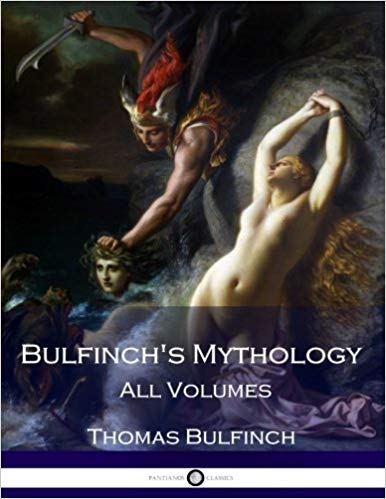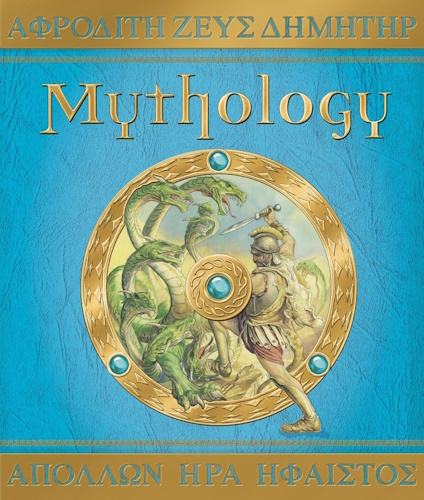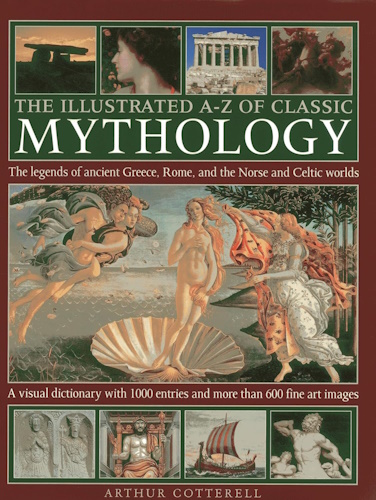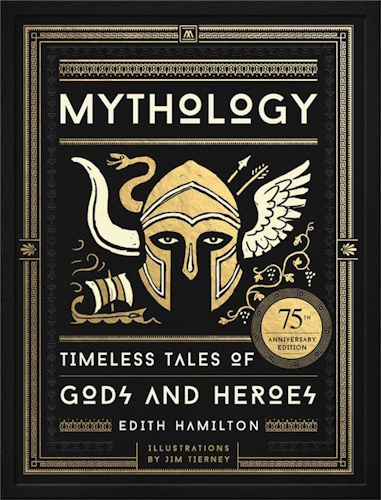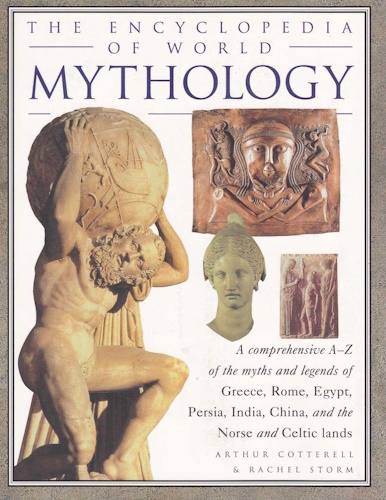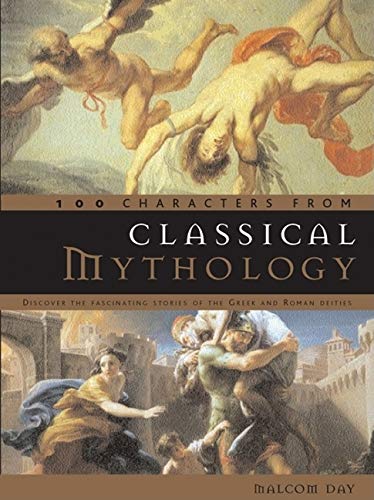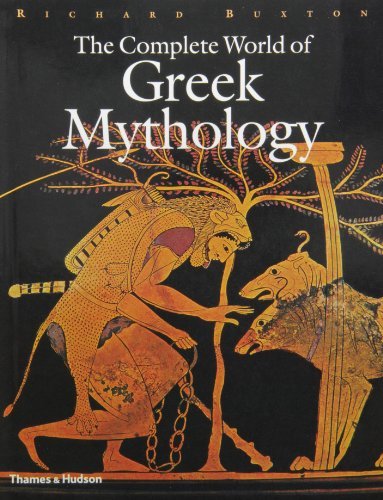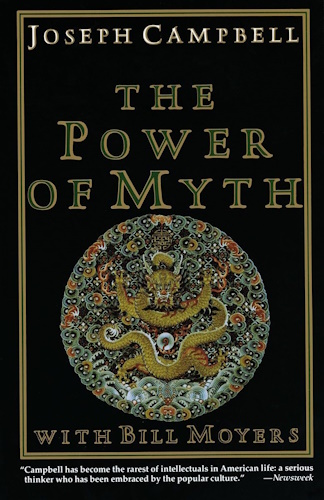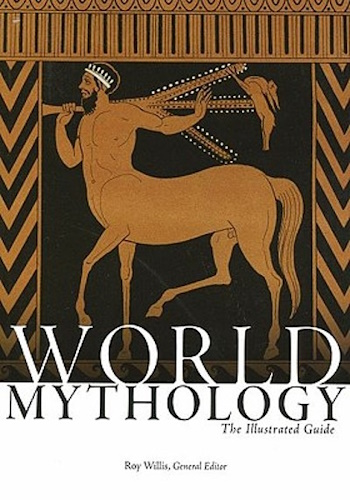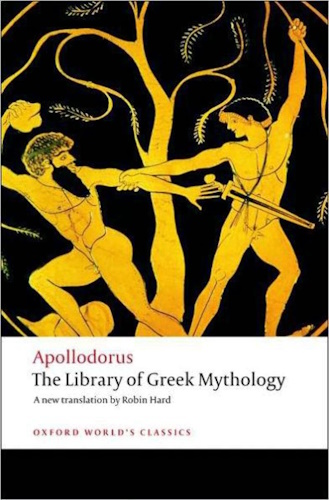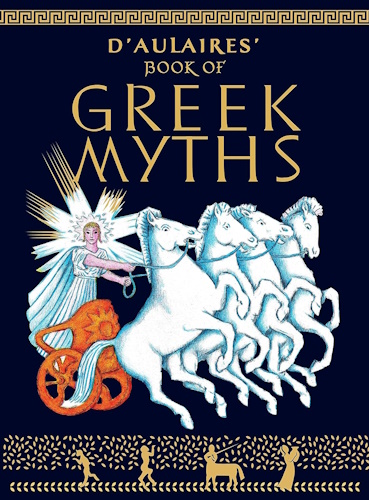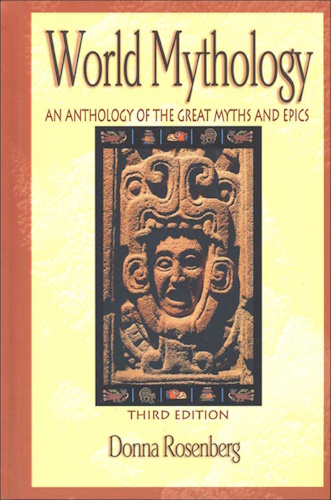
![]()
![]()
CHAPTER XXVI.
ENDYMION- ORION- AURORA AND TITHONUS- ACIS AND GALATEA.
ENDYMION was a beautiful youth who fed his flock on Mount Latmos. One calm, clear night Diana, the moon, looked down and saw him sleeping. The cold heart of the virgin goddess was warmed by his surpassing beauty, and she came down to him, kissed him, and watched over him while he slept.
Another story was that Jupiter bestowed on him the gift of perpetual youth united with perpetual sleep. Of one so gifted we can have but few adventures to record. Diana, it was said, took care that his fortunes should not suffer by his inactive life, for she made his flock increase, and guarded his sheep and lambs from the wild beasts.
The story of Endymion has a peculiar charm from the human meaning which it so thinly veils. We see in Endymion the young poet, his fancy and his heart seeking in vain for that which can satisfy them, finding his favourite hour in the quiet moonlight, and nursing there beneath the beams of the bright and silent witness the melancholy and the ardour which consume him. The story suggests aspiring and poetic love, a life spent more in dreams than in reality, and an early and welcome death.- S. G. B.
The "Endymion" of Keats is a wild and fanciful poem, containing some exquisite poetry, as this, to the moon:
"...The sleeping kineCouched in thy brightness dream of fields divine.
Innumerable mountains rise, and rise,
Ambitious for the hallowing of thine eyes,
And yet thy benediction passeth not
One obscure hiding-place, one little spot
Where pleasure may be sent; the nested wren
Has thy fair face within its tranquil ken;" etc., etc.
Dr. Young, in the "Night Thoughts," alludes to Endymion thus:
"...These thoughts, O Night, are thine;From thee they came like lovers' secret sighs,
While others slept. So Cynthia, poets feign,
In shadows veiled, soft, sliding from her sphere,
Her shepherd cheered, of her enamoured less
Than I of thee."
Fletcher, in the "Faithful Shepherdess," tells:
"How the pale Phoebe, hunting in a grove,First saw the boy Endymion, from whose eyes
She took eternal fire that never dies;
How she conveyed him softly in a sleep,
His temples bound with poppy, to the steep
Head of old Latmos, where she stoops each night,
Gilding the mountain with her brother's light,
To kiss her sweetest."
ORION.
Orion was the son of Neptune. He was a handsome giant and a mighty hunter. His father gave him the power of wading through the depths of the sea, or, as others say, of walking on its surface.
Orion loved Merope, the daughter of OEnopion, king of Chios, and sought her in marriage. He cleared the island of wild beasts, and brought the spoils of the chase as presents to his beloved; but as OEnopion constantly deferred his consent, Orion attempted to gain possession of the maiden by violence. Her father, incensed at this conduct, having made Orion drunk, deprived him of his sight and cast him out on the seashore. The blinded hero followed the sound, of a Cyclops' hammer till he reached Lemnos, and came to the forge of Vulcan, who, taking pity on him, gave him Kedalion, one of his men, to be his guide to the abode of the sun. Placing Kedalion on his shoulders, Orion proceeded to the east, and there meeting the sun-god, was restored to sight by his beam.
After this he dwelt as a hunter with Diana, with whom he was a favourite, and it is even said she was about to marry him. Her brother was highly displeased and often chid her, but to no purpose. One day, observing Orion wading through the sea with his head just above the water, Apollo pointed it out to his sister and maintained that she could not hit that black thing on the sea. The archer-goddess discharged a shaft with fatal aim. The waves rolled the dead body of Orion to the land, and bewailing her fatal error with many tears, Diana placed him among the stars, where he appears as a giant, with a girdle, sword, lion's skin, and club. Sirius, his dog, follows him, and the Pleiads fly before him.
The Pleiads were daughters of Atlas, and nymphs of Diana's train. One day Orion saw them and became enamoured and pursued them. In their distress they prayed to the gods to change their form, and Jupiter in pity turned them into pigeons, and then made them a constellation in the sky. Though their number was seven, only six stars are visible, for Electra, one of them, it is said left her place that she might not behold the ruin of Troy, for that city was founded by her son Dardanus. The sight had such an effect on her sisters that they have looked pale ever since.
Mr. Longfellow has a poem on the "Occultation of Orion." The following lines are those in which he alludes to the mythic story. We must premise that on the celestial globe Orion is represented as robed in a lion's skin and wielding a club. At the moment the stars of the constellation, one by one, were quenched in the light of the moon, the poet tells us
"Down fell the red skin of the lionInto the river at his feet.
His mighty club no longer beat
The forehead of the bull; but he
Reeled as of yore beside the sea,
When blinded by OEnopion
He sought the blacksmith at his forge,
And climbing up the narrow gorge,
Fixed his blank eyes upon the sun."
Tennyson has a different theory of the Pleiads:
"Many a night I saw the Pleiads, rising through the mellow shade,Glitter like a swarm of fire-flies tangled in a silver braid."
Locksley Hall.
Byron alludes to the lost Pleiad:
"Like the lost Pleiad seen no more below."See also Mrs. Hemans's verses on the same subject.
AURORA AND TITHONUS.
The goddess of the Dawn, like her sister the Moon, was at times inspired with the love of mortals. Her greatest favourite was Tithonus son of Laomedon, king of Troy. She stole him away, and prevailed on Jupiter to grant him immortality; but, forgetting to have youth joined in the gift, after some time she began to discern, to her great mortification, that he was growing old. When his hair was quite white she left his society; but he still had the range of her palace, lived on ambrosial food, and was clad in celestial raiment. At length he lost the power of using his limbs, and then she shut him up in his chamber, whence his feeble voice might at times be heard. Finally she turned him into a grasshopper.
Memnon was the son of Aurora and Tithonus. He was king of the AEthiopians, and dwelt in the extreme east, on the shore of Ocean. He came with his warriors to assist the kindred of his father in the war of Troy. King Priam received him with great honours, and listened with admiration to his narrative of the wonders of the ocean shore.
The very day after his arrival, Memnon, impatient of repose, led his troops to the field. Antilochus, the brave son of Nestor, fell by his hand, and the Greeks were put to flight, when Achilles appeared and restored the battle. A long and doubtful contest ensued between him and the son of Aurora; at length victory declared for Achilles, Memnon fell, and the Trojans fled in dismay.
Aurora, who from her station in the sky had viewed with apprehension the danger of her son, when she saw him fall, directed his brothers, the Winds, to convey his body to the banks of the river Esepus in Paphlagonia. In the evening Aurora came, accompanied by the Hours and the Pleiads, and wept and lamented over her son. Night, in sympathy with her grief, spread the heaven with clouds; all nature mourned for the offspring of the Dawn. The AEthiopians raised his tomb on the banks of the stream in the grove of the Nymphs, and Jupiter caused the sparks and cinders of his funeral pile to be turned into birds, which, dividing into two flocks, fought over the pile till they fell into the flames. Every year at the anniversary of his death they return and celebrate his obsequies in like manner. Aurora remains inconsolable for the loss of her son. Her tears still flow, and may be seen at early morning in the form of dew-drops on the grass.
Unlike most of the marvels of ancient mythology, there still exist some memorials of this. On the banks of the river Nile, in Egypt, are two colossal statues, one of which is said to be the statue of Memnon. Ancient writers record that when the first rays of the rising sun fall upon this statue a sound is heard to issue from it, which they compare to the snapping of a harp-string. There is some doubt about the identification of the existing statue with the one described by the ancients, and the mysterious sounds are still more doubtful. Yet there are not wanting some modern testimonies to their being still audible. It has been suggested that sounds produced by confined air making its escape from crevices or caverns in the rocks may have given some ground for the story. Sir Gardner Wilkinson, a late traveller, of the highest authority, examined the statue itself, and discovered that it was hollow, and that "in the lap of the statue is a stone, which on being struck emits a metallic sound, that might still be made use of to deceive a visitor who was predisposed to believe its powers."
The vocal statue of Memnon is a favourite subject of allusion with the poets. Darwin, in his "Botanic Garden," says:
"So to the sacred Sun in Memnon's faneSpontaneous concords choired the matin strain;
Touched by his orient beam responsive rings
The living lyre and vibrates all its strings;
Accordant aisles the tender tones prolong,
And holy echoes swell the adoring song."
Book I., 1. 182.
ACIS AND GALATEA.
Scylla was a fair virgin of Sicily, a favourite of the Sea-Nymphs. She had many suitors, but repelled them all, and would go to the grotto of Galatea, and tell her how she was persecuted. One day the goddess, while Scylla dressed her hair, listened to the story, and then replied, "Yet, maiden, your persecutors are of the not ungentle race of men, whom, if you will, you can repel; but I, the daughter of Nereus, and protected by such a band of sisters, found no escape from the passion of the Cyclops but in the depths of the sea;" and tears stopped her utterance, which when the pitying maiden had wiped away with her delicate finger, and soothed the goddess, "Tell me, dearest," said she, "the cause of your grief." Galatea then said, "Acis was the son of Faunus, and a Naiad. His father and mother loved him dearly, but their love was not equal to mine. For the beautiful youth attached himself to me alone, and he was just sixteen years old, the down just beginning to darken his cheeks. As much as I sought his society, so much did the Cyclops seek mine; and if you ask me whether my love for Acis or my hatred of Polyphemus was the stronger, I cannot tell you; they were in equal measure. O Venus, how great is thy power! this fierce giant, the terror of the woods, whom no hapless stranger escaped unharmed, who defied even Jove himself, learned to feel what love was, and, touched with a passion for me, forgot his flocks and his well-stored caverns. Then for the first time he began to take some care of his appearance, and to try to make himself agreeable; he harrowed those coarse locks of his with a comb, and mowed his beard with a sickle, looked at his harsh features in the water, and composed his countenance. His love of slaughter, his fierceness and thirst of blood prevailed no more, and ships that touched at his island went away in safety. He paced up and down the sea-shore, imprinting huge tracks with his heavy tread, and, when weary, lay tranquilly in his cave.
"There is a cliff which projects into the sea, which washes it on either side. Thither one day the huge Cyclops ascended, and sat down while his flocks spread themselves around. Laying down his staff, which would have served for a mast to hold a vessel's sail, and taking his instrument compacted of numerous pipes, he made the hills and the waters echo the music of his song. I lay hid under a rock by the side of my beloved Acis, and listened to the distant strain. It was full of extravagant praises of my beauty, mingled with passionate reproaches of my coldness and cruelty.
"When he had finished he rose up, and, like a raging bull that cannot stand still, wandered off into the woods. Acis and I thought no more of him, till on a sudden he came to a spot which gave him a view of us as we sat. 'I see you,' he exclaimed, 'and I will make this the last of your love-meetings.' His voice was a roar such as an angry Cyclops alone could utter. AEtna trembled at the sound. I, overcome with terror, plunged into the water. Acis turned and fled, crying, 'Save me, Galatea, save me, my parents!' The Cyclops pursued him, and tearing a rock from the side of the mountain hurled it at him. Though only a corner of it touched him, it overwhelmed him.
"All that fate left in my power I did for Acis. I endowed him with the honours of his grandfather, the river-god. The purple blood flowed out from under the rock, but by degrees grew paler and looked like the stream of a river rendered turbid by rains, and in time it became clear. The rock cleaved open, and the water, as it gushed from the chasm, uttered a pleasing murmur."
Thus Acis was changed into a river, and the river retains the name of Acis.
Dryden, in his "Cymon and Iphigenia," has told the story of a clown converted into a gentleman by the power of love, in a way that shows traces of kindred to the old story of Galatea and the Cyclops.
"What not his father's care nor tutor's artCould plant with pains in his unpolished heart,
The best instructor, Love, at once inspired,
As barren grounds to fruitfulness are fired.
Love taught him shame, and shame with love at strife
Soon taught the sweet civilities of life."
-
Urantia Book, 44:0.11 - The Celestial Artisans
Never in your long ascendancy will you lose the power to recognize your associates of former existences. Always, as you ascend inward in the scale of life, will you retain the ability to recognize and fraternize with the fellow beings of your previous and lower levels of experience. Each new translation or resurrection will add one more group of spirit beings to your vision range without in the least depriving you of the ability to recognize your friends and fellows of former estates.
-
Princess Bride 1987 Wallace Shawn (Vizzini) and Mandy Patinkin (Inigo Montoya)
Vizzini: HE DIDN'T FALL? INCONCEIVABLE.
Inigo Montoya: You keep using that word. I do not think it means what you think it means. -
Urantia Book, 117:4.14 - The Finite God
And here is mystery: The more closely man approaches God through love, the greater the reality -- actuality -- of that man. The more man withdraws from God, the more nearly he approaches nonreality -- cessation of existence. When man consecrates his will to the doing of the Father's will, when man gives God all that he has, then does God make that man more than he is.
-
Urantia Book, 167:7.4 - The Talk About Angels
"And do you not remember that I said to you once before that, if you had your spiritual eyes anointed, you would then see the heavens opened and behold the angels of God ascending and descending? It is by the ministry of the angels that one world may be kept in touch with other worlds, for have I not repeatedly told you that I have other sheep not of this fold?"
-
Urantia Book, Foreword - 0:12.12 - The Trinities
But we know that there dwells within the human mind a fragment of God, and that there sojourns with the human soul the Spirit of Truth; and we further know that these spirit forces conspire to enable material man to grasp the reality of spiritual values and to comprehend the philosophy of universe meanings. But even more certainly we know that these spirits of the Divine Presence are able to assist man in the spiritual appropriation of all truth contributory to the enhancement of the ever-progressing reality of personal religious experience—God-consciousness.
-
Urantia Book, 1:4.3 - The Mystery Of God
When you are through down here, when your course has been run in temporary form on earth, when your trial trip in the flesh is finished, when the dust that composes the mortal tabernacle "returns to the earth whence it came"; then, it is revealed, the indwelling "Spirit shall return to God who gave it." There sojourns within each moral being of this planet a fragment of God, a part and parcel of divinity. It is not yet yours by right of possession, but it is designedly intended to be one with you if you survive the mortal existence.
-
Urantia Book, 1:4.1 - The Mystery Of God
And the greatest of all the unfathomable mysteries of God is the phenomenon of the divine indwelling of mortal minds. The manner in which the Universal Father sojourns with the creatures of time is the most profound of all universe mysteries; the divine presence in the mind of man is the mystery of mysteries.
-
Urantia Book, 1:4.6 - The Mystery Of God
To every spirit being and to every mortal creature in every sphere and on every world of the universe of universes, the Universal Father reveals all of his gracious and divine self that can be discerned or comprehended by such spirit beings and by such mortal creatures. God is no respecter of persons, either spiritual or material. The divine presence which any child of the universe enjoys at any given moment is limited only by the capacity of such a creature to receive and to discern the spirit actualities of the supermaterial world.
-
Urantia Book, 11:0.1 - The Eternal Isle Of Paradise
Paradise is the eternal center of the universe of universes and the abiding place of the Universal Father, the Eternal Son, the Infinite Spirit, and their divine co-ordinates and associates. This central Isle is the most gigantic organized body of cosmic reality in all the master universe. Paradise is a material sphere as well as a spiritual abode. All of the intelligent creation of the Universal Father is domiciled on material abodes; hence must the absolute controlling center also be material, literal. And again it should be reiterated that spirit things and spiritual beings are real.
-
Urantia Book, 50:6.4 - Planetary Culture
Culture presupposes quality of mind; culture cannot be enhanced unless mind is elevated. Superior intellect will seek a noble culture and find some way to attain such a goal. Inferior minds will spurn the highest culture even when presented to them ready-made.
-
Urantia Book, 54:1.6 - True And False Liberty
True liberty is the associate of genuine self-respect; false liberty is the consort of self-admiration. True liberty is the fruit of self-control; false liberty, the assumption of self-assertion. Self-control leads to altruistic service; self-admiration tends towards the exploitation of others for the selfish aggrandizement of such a mistaken individual as is willing to sacrifice righteous attainment for the sake of possessing unjust power over his fellow beings.
-
Urantia Book, 54:1.9 - True And False Liberty
How dare the self-willed creature encroach upon the rights of his fellows in the name of personal liberty when the Supreme Rulers of the universe stand back in merciful respect for these prerogatives of will and potentials of personality! No being, in the exercise of his supposed personal liberty, has a right to deprive any other being of those privileges of existence conferred by the Creators and duly respected by all their loyal associates, subordinates, and subjects.
-
Urantia Book, 54:1.8 - True And False Liberty
There is no error greater than that species of self-deception which leads intelligent beings to crave the exercise of power over other beings for the purpose of depriving these persons of their natural liberties. The golden rule of human fairness cries out against all such fraud, unfairness, selfishness, and unrighteousness.
